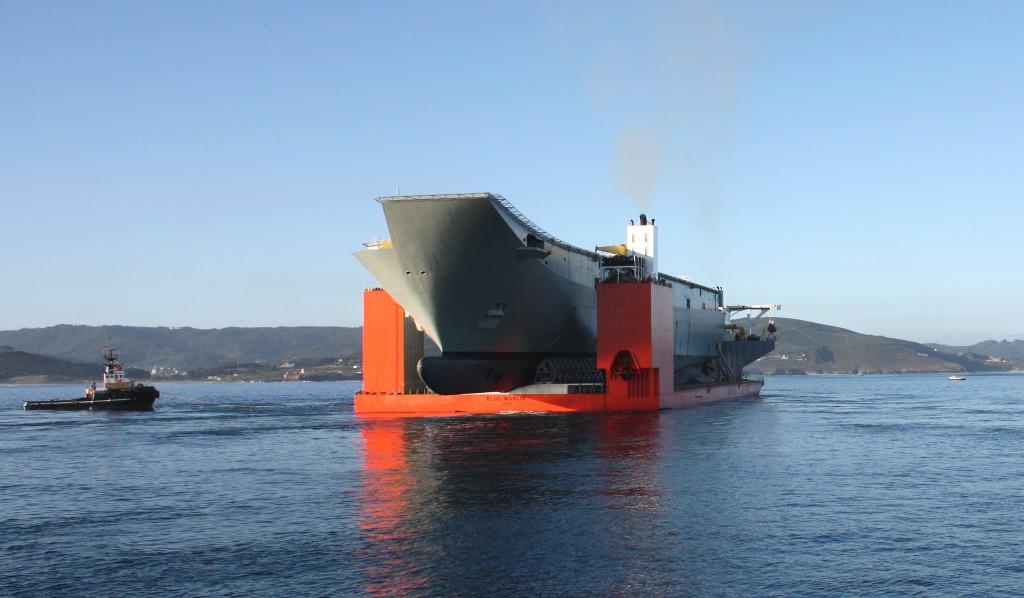Reader response: amphibious capability
Posted By Kym Bergmann on November 12, 2013 @ 13:00
 [1]I substantially agree with Hugh White’s analysis [2] of the overall structure of Australia’s surface fleet—or at least the amphibious assault component of it. One of the original justifications for seeking an LHD of more than 25,000 tonnes was that only ships of this size could simultaneously lift an entire infantry company, which we’re assured requires a minimum of six helicopters in the air at the same time. But why all six helicopters need to operate simultaneously from one large ship rather than, say, two slightly smaller ones has never to my knowledge been convincingly explained. And as White argues, this sort of combat capability is in any case irrelevant to the role of the ships for humanitarian and disaster relief. Additionally, it has never been made clear why a company is some sort of indivisible unit when it comes to airborne assault—surely there are some circumstances when a company won’t be enough, just as there’ll be circumstances where smaller units, and therefore smaller numbers of helicopters, are perfectly adequate.
[1]I substantially agree with Hugh White’s analysis [2] of the overall structure of Australia’s surface fleet—or at least the amphibious assault component of it. One of the original justifications for seeking an LHD of more than 25,000 tonnes was that only ships of this size could simultaneously lift an entire infantry company, which we’re assured requires a minimum of six helicopters in the air at the same time. But why all six helicopters need to operate simultaneously from one large ship rather than, say, two slightly smaller ones has never to my knowledge been convincingly explained. And as White argues, this sort of combat capability is in any case irrelevant to the role of the ships for humanitarian and disaster relief. Additionally, it has never been made clear why a company is some sort of indivisible unit when it comes to airborne assault—surely there are some circumstances when a company won’t be enough, just as there’ll be circumstances where smaller units, and therefore smaller numbers of helicopters, are perfectly adequate.
A slightly larger number of smaller LHDs could also have been entirely constructed in Australia (the hulls of the Spanish Juan Carlos class are just too large to be economically built here). If that had been the case then the naval shipbuilding sector wouldn’t be facing the crisis that once again confronts it—and all of us—because of a complete absence of forward planning by Defence and Navy. The industry policy tail shouldn’t wag the Defence dog—Heaven forfend!—but it should be an important element when these multi-billion dollar projects are under development.
My concerns about the AWDs, on the other hand, relate more to their combat system and their builder rather than to their size and numbers. The early mandating of the ‘Aegis’ system was an unusual move by the Defence bureaucracy, and is one which has some virtues but has locked Australia into a solution that—almost a decade later—mightn’t be the best one for our needs. I also have considerable concerns about the contracted model, where in essence the Commonwealth has awarded the contract to itself in the form of a Government-owned dockyard. As I wrote for The Australian recently, the chickens are truly coming home to roost on that one.
Kym Bergmann is the editor of Asia Pacific Defence Reporter & Defence Review Asia. Image courtesy of the Department of Defence [3].
Article printed from The Strategist: https://aspistrategist.ru
URL to article: /reader-response-amphibious-capability/
URLs in this post:
[1] Image: https://aspistrategist.ru/wp-content/uploads/2013/11/20120817navantia_004.jpg
[2] Hugh White’s analysis: https://aspistrategist.ru/why-lhds-and-awds-are-a-bad-investment/
[3] Department of Defence: http://images.defence.gov.au/20120817navantia_004.jpg
Click here to print.